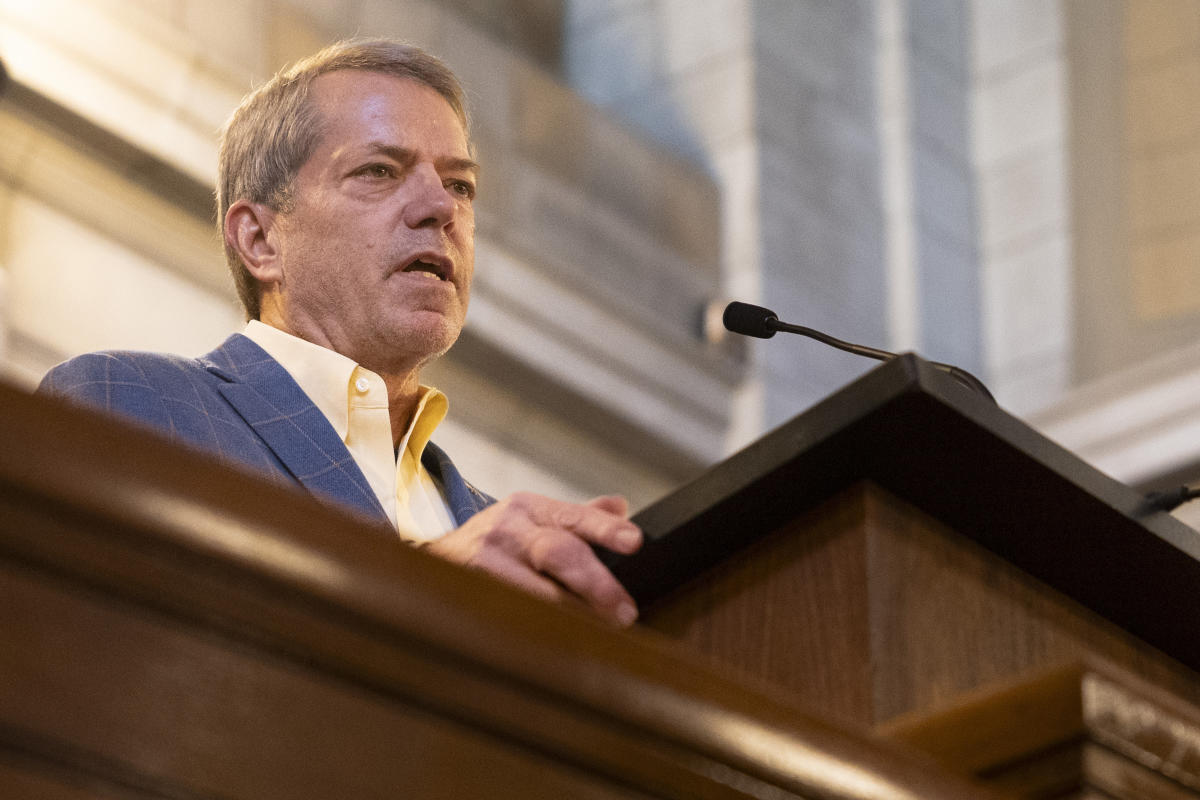The U.S. Forest Service will revise management plans for 128 national forests and grasslands to protect old-growth and mature habitats.
The agency will create a first-of-its-kind national forest plan, aimed at benefitting what it calls some of America’s rarest ecosystems across 193 million acres of forests.
The forest service initiated a 45-day public comment period on the proposal, seeking input from the public, Indigenous tribes, local governments and other stakeholders.
These revisions follow President Joe Biden’s April 2022 executive order to conserve and restore mature and old-growth forests, which absorb the carbon dioxide equivalent of over 10% of America’s annual greenhouse gas emissions.
The order requires the Forest Service and the Bureau of Land Management to coordinate efforts on a national scale.
“Old-growth forests are a vital part of our ecosystems and a special cultural resource,” said Agriculture Secretary Tom Vilsack. “This proposed nationwide forest plan amendment — the first in the agency’s history — is an important step in conserving these national treasures.”
The initiative will address pressures from climate change and the logging industry, with the goal of helping forests across Arizona and the country. The agencies will analyze threats and collect public comment throughout 2024, before finalizing a plan in early 2025.
Here’s what to know about the old-growth and mature forest initiative:
Wildfire and forests: 30 years after the deadly Dude Fire, work begins in the forest to prevent another disaster
What is the old-growth and mature forest initiative?
Many people may envision old-growth forests as the groves of centuries-old, towering redwoods in California and the Northwest, but the forests in the plan include numerous tree species across the country.
Old-growth forests are ecosystems dominated by old trees with important ecological attributes like multi-layered canopies, dead and fallen trees, biological diversity and wildlife habitat.
Mature forests share similar attributes, except with trees that have reached maturity but may not have the same level of ecological complexity as old-growth forests.
Revised management plans will include conservation and wildfire risk reduction efforts, potential threats and reforestation plans and goals that include community-led local and regional economic opportunities.
“This is an important direction and signals very strong intent for the conservation and protection of old and mature forests,” said Andrew Joel Sánchez Meador, executive director of Northern Arizona University’s Ecological Restoration Institute. “This is a move forward in a more holistic forest management approach.”
Frequent forest fires, insect infestations and temperature and precipitation fluctuations due to climate change, alongside previous logging practices and land management policies, have jeopardized forests.
Old-growth and mature forests vary widely by forest type, geographic region, climate and types of disturbances.
Meador says an old-growth ponderosa pine forest would “look wildly different” from a spruce-fir forest, as they grow at different places in Arizona mountains with varied life cycles.
Spruce-fir systems establish themselves and reach maturity, and then a disturbance like a wildfire would “reset the clock” and a new forest would replace it. This cycle repeats over hundreds of years, while an old-growth ponderosa pine forest has evolved to frequent low-severity fire and can persist indefinitely.
Because of such diversity across ecosystems, the Forest Service and BLM have created an initial inventory of old-growth and mature forests across the country to inform conservation efforts.
The agencies defined over 200 unique forest vegetation types and identified 32 million acres of old-growth and 80 million acres of mature forests across the National Forest System. They respectively represent about 18% and 45% of the forested land managed by the two agencies.
Forest health: How thinning dense Arizona forests could prevent another megafire and protect water sources
How is this initiative beneficial in Arizona and nationwide?
Old-growth and mature forests provide societal, ecological, recreational and cultural benefits, conservation advocates say, and revising land management plans will ensure their longevity so future generations can enjoy them.
Arizona’s old-growth and mature forests throughout the state will benefit from the initiative.
While specific areas in Arizona still need to be identified under the national plan, Meador says old-growth forests exist along the Mogollon Rim and highlands, the southern end of the Colorado Plateau, along the San Francisco peaks, the White Mountains in Apache-Sitgreaves National Forests, in the northern Kaibab and across the Sky Islands.
These forests provide biodiversity and habitats for wildlife, especially for those dependent on standing and fallen snags. They also improve water quality and prevent erosion.
As carbon emissions continue to warm the atmosphere, forest advocates believe carbon sequestration from old-growth forests is more important than ever.
Carbon sequestration is a natural process in which trees store significant amounts of carbon and prevent its release into the atmosphere.
“Old-growth trees are some of the most valuable resources we have for taking on climate change and safeguarding thriving ecosystems,” said Sierra Club director Ben Jealous. “And with only a fraction in the United States still standing, it’s vital we preserve those trees and forests across the country.”
It can take decades, or even centuries for forests to reach old-growth status. Meador believes that as environmental threats like wildfires, disease and insect infestations diminish the longevity of forests, “their rareness also makes them a valued commodity.”
Forests also provide cultural and spiritual value, especially to indigenous tribes whose ancestral lands encompassed old-growth forests.
Sign up for AZ Climate: The Republic’s climate and environment newsletter delivers stories like this one to your inbox every Tuesday.
What’s next?
The agencies have conducted an initial threat analysis for old-growth and mature forests and plan to release a full report in early 2024.
They have also requested stakeholders submit comments by Feb. 2 to inform the next steps.
The inventory, threat analysis and comments from the public will guide the revised management plans expected by early 2025.
“We urge the Forest Service to listen to Tribes, local governments, stakeholders and the public to ensure that the amended plans retain existing old-growth forests, restore the health of degraded old-growth forests, and grow future generations of old-growth forests,” said Marcia Argust, the director of Pew’s U.S. conservation program.
Hayleigh Evans covers environmental issues for The Arizona Republic and azcentral.com. Send tips or questions to hayleigh.evans@arizonarepublic.com.
Environmental coverage on azcentral.com and in The Arizona Republic is supported by a grant from the Nina Mason Pulliam Charitable Trust. Sign up for AZ Climate, our weekly environment newsletter, and follow The Republic environmental reporting team at environment.azcentral.com and @azcenvironment on Facebook, X and Instagram.
You can support environmental journalism in Arizona by subscribing to azcentral today.
This article originally appeared on Arizona Republic: US Forest Service proposes management plans for old-growth habitat
Signup bonus from





